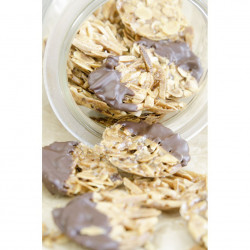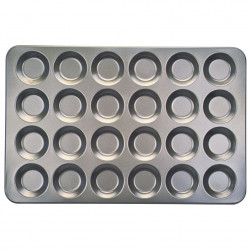-
MenuBack
-
Online Store
-
-
-
-
-
Leer
- Couverture
- Temperature control units
- Aids for chocolate
- Chocolate molds
- Praline fillings
- Chocolate ingredients
- Praline hollow body
- Chocolate colors
- Chocolate tattoos
- Chocolate packaging
- Bean to Bar
- Material for cutting chocolates
- Batons with Kirsch
- Airbrush for chocolate
- High Heels Accessories
- Textured films for chocolate
- Chocolate fountain & fondue
-
-
-
-
-
Kuchen & Torten
- Cakes Fillings & Ingredients
- Fondant & Marzipan
- Cakes tools
- Cake rings
- Silicone molds
- Baking pans for cakes
- Cake stand
- Cakes packaging
- Airbrush for cakes
- Sugar flowers accessories
- Cake Topper & Wedding Figurines
- Cakes dummies
-
-
-
-
-
-
-
-
-
-
-
-
-
-
-
-
-
-
-
-
-
-
-
Füllungen
- Baking chocolate
- Glucose & Sorbitol
- Cocoa beans
- Cocoa nibs
- Monin syrup
- Champagne & Alcohols
- Freeze dried fruits
- Cake & cake glaze
- Flours & baking ingredients
- Chocolate coating & chocolate
- Milk powder
- Granules
- Nuts & Nougat
- Fruit puree
- Creams & Fillings
- Egg yolk & egg white
- Fruit powder
- Special ingredients
- Fondant & Flower Paste
-
-
-
-
-
-
-
- Punching, cutting & embossing
- Mixing bowls & whisks
- Chocolate material
- Thermometer & Burner
- Gloves & Protective Material
- Smoothing & Modeling
- Roll out bar
- Dough scraper & horn
- (Flour) sieves
- Cake turntable
- Spatula & Spatula
- Silicone embossing molds
- Insert strips & cake slices
- Brushes & Tweezers
- Measuring cup
-
-
-
-
-
-
-
-
-
Ausstechformen
-
-
-
-
-
-
-
-
-
Courses
-
-
kurse
- Current courses
- Praline courses
- Chocolate courses
- Chocolate kiss course
- Macaron courses
- Cake courses
- Baking courses
- Patisserie courses
- Ice cream course
- Guetzli, Cookie & Confectionery Courses
- Bread courses
- Pasta courses
- Apéro course
- Cupcakes courses
- Éclair course
- Courses in Zurich - Adliswil
- Children's courses
-
-
- Team Events
- Hen Night
- Retail Store
-
About Us
-
-
-
DirectionsDownload relevant PDF now.
-
-
-
Recipes blog
-
-
Recipes Blog
-
-
-
Shipping and Payment
-
-
Versand/Zahlung/Impressum
-
-
- Online Shop
-
- Novelties
- Sale
- Chocolate and chocolates
- Couverture
- Temperature control units
- Aids for chocolate
- Chocolate molds
- Praline fillings
- Chocolate ingredients
- Praline hollow body
- Chocolate colors
- Chocolate tattoos
- Chocolate packaging
- Bean to Bar
- Material for cutting chocolates
- Batons with Kirsch
- Airbrush for chocolate
- High Heels Accessories
- Textured films for chocolate
- Chocolate fountain & fondue
- Couverture
- Gifts Cards
- Stencils & Stencils
- Cakes & Pies
- Ice cream
- Bread
- Macarons
- Hearty
- Recipe booklets & books
- Cupcakes
- Dessert
- Cake Pops
- Edible decorations
- Fillings & Ingredients
- Glucose & Sorbitol
- Cocoa beans
- Baking chocolate
- Cocoa nibs
- Monin syrup
- Champagne & Alcohols
- Freeze dried fruits
- Cake & cake glaze
- Milk powder
- Flours & baking ingredients
- Chocolate coating & chocolate
- Granules
- Nuts & Nougat
- Fruit puree
- Creams & Fillings
- Egg yolk & egg white
- Fruit powder
- Special ingredients
- Fondant & Flower Paste
- Food Colors
- Auxiliary means
- Spouts & piping bags
- Fondant, marzipan, flower paste
- Bakeware
- Aprons & Potholders
- Cookie cutters
- Season
- Candles
- Party accessories
- Tableware
Florentine
There are 5 products.
Active filters
Florentines, what is it? And where do the Florentines come from?
Welcome to the world of Florentines! Do you already know these delicious crunchy sweeties? Florentines are delicate and crunchy almond pastries enhanced with honey, caramelized almonds and candied fruit. The combination of these sweet flavors creates an irresistible treat for your senses. Originally, Florentines come from the stunning Italian city of Florence, where they were conceived by master bakers. Now you can enjoy the Florentine experience no matter where you are! Immerse yourself in this tantalizing world and experience the taste of Florentines that will enchant you with their rich aroma!
Preparation of homemade florentines.
Do you love the delicious Florentines, but you prefer to prepare them yourself? No problem! With a few simple steps you can prepare your own homemade Florentines and be enchanted by their irresistible taste. First, prepare a mixture of almonds, dried fruit and sugar. Then melt dark chocolate and mix it into the almond mixture. Shape them into small bars and bake them in the oven until they are golden brown and crispy. Let them cool and enjoy your homemade Florentines as a delicious dessert or gift for your loved ones. Get to work and be inspired by your own creation.
Florentine recipe
Ingredients:
- 100g flaked almonds
- 100g butter
- 100g sugar
- 100g whole cream
- 100g chopped almonds
- 50g candied orange peel pieces
- 50g candied lemon peel pieces
- 50g raisins
- 1 tsp vanilla sugar
- 150g dark couverture
Preparation:
1. Toast the almond flakes in a pan without fat until golden brown and set aside.
2.Heat the butter, sugar and cream in a saucepan until the sugar is completely dissolved. Then add the chopped almonds, candied candied orange peel pieces, candied lemon peel pieces, raisins and vanilla sugar and mix well. If you don't like candied or dried fruit, you can omit this without any problem.
3. Simmer the mixture over medium heat until it turns slightly brown and has a thick consistency. Keep stirring to make sure nothing burns. Remove the pan from the heat and allow the mixture to cool slightly.
4. Preheat the oven to 180 degrees Celsius and line a baking tray with baking paper.
5. Using a tablespoon, place small portions of the florentine mixture on the baking tray and flatten slightly. Leave enough space, as the florentines will still melt a little during baking.
6. Place the baking tray in the preheated oven and bake the florentines for about 10-12 minutes until golden brown. Caution: The Florentines can burn quickly, so check them every now and then.
7. Remove the Florentines from the oven and let them cool slightly on the baking tray. Then carefully remove from the baking paper and let cool completely on a cooling rack.
8. Roughly chop the dark chocolate and melt over a water bath. Dip one side of the florentines into the melted chocolate and then leave to dry on baking paper until the chocolate has set.
9. Store the finished florentines in an airtight tin. They will keep for several weeks and taste best when they are slightly set.
What is the shelf life of Florentines? And how can I store Florentines well?
Florentines can keep for up to 2-3 weeks, depending on the recipe and how they are stored. To keep them fresh and crisp, store them in an airtight container or tin. To prevent sticking, you can place parchment paper between each layer. It is also advisable to keep them in a cool and dry place to avoid softening. To make sure they will keep for a long time, you can also store them in the refrigerator.
Can you freeze florentines?
Yes, Florentines can be frozen. However, it is recommended to wrap them well before freezing to prevent moisture penetration and to maintain flavor consistency. When thawing, they should be thawed slowly in the refrigerator to avoid clumping or shifting.
Common problems and solutions in Florentine production.
A common problem when making florentines is that the mixture becomes too liquid and not firm enough. This can be due to several reasons, such as too much butter or not enough almonds in the mixture. One way to solve this problem is to add more almonds or to add flour or powdered sugar to make the mixture thicker.
Another problem can be that the florentines diverge too much and do not keep their shape. This may be because there is too much butter in the mixture or it has not cooled sufficiently before being placed on the baking sheet. To solve this problem, you can reduce the amount of butter or let the florentines cool for a longer time after baking before removing them from the baking sheet.
Another common problem is that the florentines get too hard and are not crispy enough. This may be because they have been baked too long or the mixture contains too much sugar. To solve this problem, you can shorten the baking time or reduce the amount of sugar in the mixture.
Finally, a problem can occur if the florentines are not browned evenly. This may be due to the fact that the oven was not preheated properly or the florentines were not evenly distributed on the tray. To solve this problem, make sure the oven is preheated to the correct temperature and the florentines are evenly distributed on the tray so they brown evenly.
Florentines are too soft, what can be done?
There are several ways to make Florentines firmer or crispier:
1. Changing the baking time: Increase the baking time slightly to leave the Florentines in the oven longer. This may help to firm up the texture.
2. Change the baking temperature: increase the baking temperature slightly to make the Florentines bake faster and crispier.
3. Use more nuts: Add a larger amount of toasted nuts to the florentine mixture to make the consistency firmer.
4. Use less liquid ingredients: Reduce the amount of liquid ingredients, such as honey or syrup, to make the florentines firmer.
5. Use less butter: Reduce the amount of butter in the florentine mixture to make the consistency firmer.
6. Rest longer: Let the florentines rest longer after baking to allow them to harden a bit.
7. Coat bottom with chocolate: Dip the bottom of the florentines in melted chocolate to form a solid layer and improve the texture.
Try one or more of these methods to make florentines firmer or crispier.
Why are my florentines melting?
There are several possible reasons why Florentines might melt:
1. Incorrect ratio of ingredients: The mixture of sugar, butter and cream is critical to the consistency of the florentines. If the ratio is not right, the mixture may be too runny and melt during baking.
2. Baking time and temperature: Florentines are baked at a relatively high temperature to make them crispy. However, if they are baked too long or the temperature is too high, they may melt and fall apart.
3. Lack of binders: In some recipes, eggs or flour are used as binders to hold the ingredients together. If these are missing or not used enough, the florentines may melt.
4. Rolled out too thin: If the dough for the florentines is rolled out too thin, it can melt and come apart during baking.
To make sure your florentines don't melt, I recommend following the recipe exactly and carefully monitoring the baking time and temperature. Also, it is important not to roll out the dough too thinly and to add binders such as eggs or flour if necessary to improve the consistency.
Which baking pan should I use for florentines?
A Florentine baking pan is best suited for Florentines. This allows the florentines to be portioned evenly and they can be easily removed from the mold. There are Florentine baking molds or also Florentine molds made of silicone. In any case, both baking molds work, although we prefer a Florentine baking mold made of silicone mold. In the online store of minischoggi you can buy different Florentine baking molds. In addition, there is a large bakery store in Zurich Adliswil, where you can buy Florentine baking molds on site.



